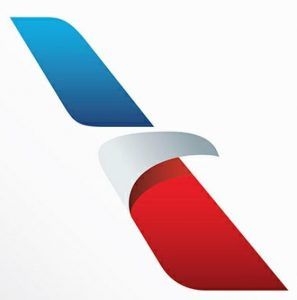American Airlines has sued the Acting Register of the U.S. Copyright Office seeking judicial review of the Copyright Office's decision to reject American's application to register its award winning corporate logo, known as the Flight Symbol. Registration of the Flight Symbol has been in a holding pattern since 2016 when American's first application to the U.S. Copyright Office was grounded for lack of creativity. While the Copyright Office acknowledges that only a "modicum of creativity is necessary"i to register a work under the Copyright Act, it ruled that the Flight Symbol fails to meet this minimal standard.ii
American continued to challenge the Copyright Office's determination, to no avail. In response to American's latest and final bid for reconsideration, the Copyright Office wrote "while the bar for creativity is low, it does exist and [the Flight Symbol] cannot glide over its low heights."iii In particular, the Copyright Office ruled that American could not register the Flight Symbol because it consisted of common geometric shapes and thus was ineligible for registration. iv American has now turned to the federal courts to register the Flight Symbol.
The Flight Symbol
American first introduced the Flight Symbol to the public in 2013, following its merger with US Airways. Before that time, and since the late 1960s, American's corporate logo consisted of two letter "A"s, side by side, with an eagle between the letters.
According to the lawsuit filed by American, it worked with an award-winning design agency for two years to craft its new corporate logo that "would pay homage" to American's history "as well as its passion for progress."v In doing so, it created the Flight Symbol, pictured below:

American has described the Flight symbol as invoking three images: (1) an aircraft's tail assembly, (2) an eagle head curling over a tail assembly, and (3) the formation of the right half of the letter "A", representing American.i In 2013, the designers of the Flight Symbol received a CLIO award, a prestigious advertising award, in the category of Corporate Identity Design.ii
Meanwhile the Copyright Office has continually rejected American's bids to register the logo finding that it is a work "comprised of basic geometric shapes" and therefore is not eligible for registration.iii
How Much Creativity is Enough?
Only "original" works of authorship can be registered with the Copyright Office.iv In order to be "original" a work must both be (1) independently created (i.e., not copied from another work), and (2) sufficiently creative.v In Feist Pubs. Inc. v. Rural Tel. Serv. Co., the Supreme Court ruled that the level of creativity needed for a work to be original is "extremely low; even a slight amount will suffice. The vast majority of works make the grade quite easily, as they possess some creative spark, no matter how crude, humble or obvious it might be."vi
Originality and Geometric Shapes
According to Compendium of U.S. Copyright Practices, a manual that provides guidance to the staff of the Copyright Office, "[t]he Copyright Act does not protect common geometric shapes . . . . Generally, the U.S. Copyright Office will not register a work that merely consists of common geometric shapes unless the author's use of those shapes results in a work that, as a whole, is sufficiently creative."i
What sorts of works, consisting of common geometric shapes, are eligible for registration? A simplistic video game where the player uses a rectangular paddle to hit a square ball against a virtual wall comprised of eight rows of rectangles, is sufficiently creative.ii A sculpture composed of 39 clear glass rectangles, overlying each other to form a spiral with approximately 405 degrees of arc, also possesses enough "creative spark" to warrant protection.iii
Given the artistic choices made by the designers of the Flight Logo to evoke several different images, all relating to American's brand, American will likely find friendlier skies in the U.S. District Court and its corporate logo will finally be cleared for landing.
Footnotes
i U.S. COPYRIGHT OFFICE, COMPENDIUM (THIRD), COPYRIGHT OFFICE PRACTICES, § 906.1 (2017)(emphasis added).
ii Atari Games Corp. v. Oman, 979 F.2d 242 (D.C. Cir. 1992).
iii Runstadler Studios, Inc. v. MCM Ltd. P'ship, 768 F. Supp. 1292, 1295 (N.D. Ill. 1991).
i Id. at ¶ 16.
ii See https://www.prnewswire.com/news-releases/futurebrand-wins-prestigious-clio-award-for-the-new-american-airlines-207908841.html .
iii Jan. 2018 Ltr.
iv 17 U.S.C. § 102(a).
v Feist Pubs. Inc. v. Rural Tel. Serv. Co., 499 U.S. 340, 345 (1991).
vi Id. (internal citations and quotations omitted).
i Letter from U.S. Copyright Office Review Board to Andrew J. Avsec (Jan. 8, 2018)(herein Jan. 2018 Ltr.") available at https://www.copyright.gov/rulings-filings/review-board/docs/american-airlines-flight-symbol.pdf (quoting Supreme Court's opinion in Feist Pubs. Inc. v. Rural Tel. Serv. Co., 499 U.S. 340, 346 (1991)("originality requires independent creation plus a modicum of creativity")).
ii Jan. 2018 Ltr.
iii Id.
iv Id.
v Am. Airlines, Inc. v. Temple, Index No. 4:18-cv-843-Y (N.D. Tex.)(ECF Doc. No. 1) at ¶ 13.
The content of this article is intended to provide a general guide to the subject matter. Specialist advice should be sought about your specific circumstances.

